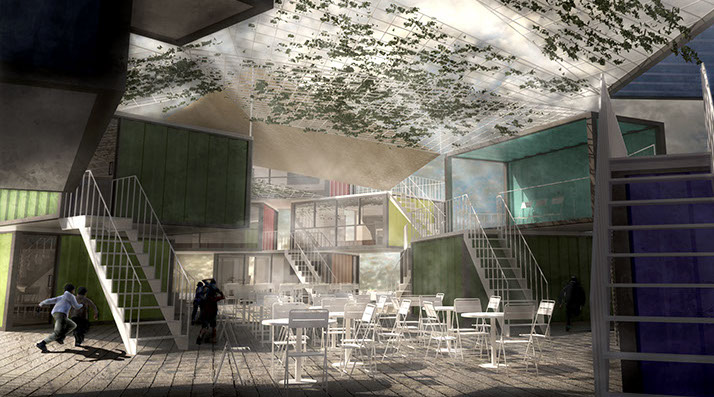Trees, mountains, and caves are examples of architecture in nature. They are not molded to a man’s dimension, but rather in shapes that spark our own interpretation and imagination of spaces. I have envisioned an architecture that is not solely organized for its functionalities, but also organized via local spatial relationships that encourages people to explore a spectrum of opportunities. Rather than being restrained by the function of the space, people will be free to seek new opportunities and assimilate into spaces through their own interpretations, akin to the architecture of nature. The network of stairs allows participants to decide how they want to approach and experience various spaces, while simultaneously transforming the entire architecture into a children’s playground. Various areas defined by the overhanging of containers, covering of water-proof fabric, and layering of porous meshes, offer a spectrum of variety and coverage from natural elements. During the harsh summer, the central open space will become an oasis, akin to a forest, where people can socialize comfortably in the shade.



At McGill University School of Architecture